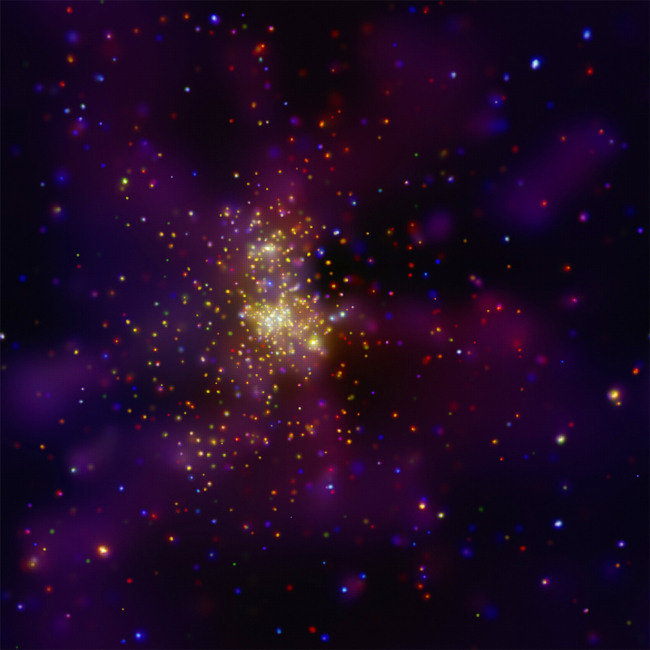
 Credit: NASA/CXC/Univ. de Liège/Y. Nazé et al.
Credit: NASA/CXC/Univ. de Liège/Y. Nazé et al.
In this Corner...
We have the reigning heavyweight champ right here. Sure, there are a number of stars which are believed to have larger masses, like η Car or the Pistol Star, but masses for these stars are determined by indirect methods.
When you can directly measure the mass of a star (by its dynamical interaction with a partner), that's about as firm a number as you can get in astronomy. The champ, called W20a, can be seen in the image above as the bright yellow object just below and to the right of the image center. This image is an X-ray image from the Chandra Observatory where color stands for X-ray energy: red for low energy, green for medium and blue for high energy X-rays. The champ belongs to one of the most unusual star clusters in the Milky Way, a dusty grouping called Westerlund 2 (named for its discoverer, Bengt Westerlund). WR20a is a binary star, and detailed observations of it around its 3.7-day orbit allow astronomers to precisely determine the masses of both stars, and they're whoppers: 82 and 83 solar masses. Look at the dozens of point sources seen by Chandra in Westerlund 2: how many others harbor such stellar monsters?
<
HEA Dictionary ● Archive
● Search HEAPOW
● Other Languages
● HEAPOW on Facebook
● Download all Images
● Education ● HEAD
>
Each week the HEASARC
brings you new, exciting and beautiful images from X-ray and Gamma ray
astronomy. Check back each week and be sure to check out the HEAPOW archive!
Last modified Tuesday, 27-Feb-2024 10:10:20 EST


